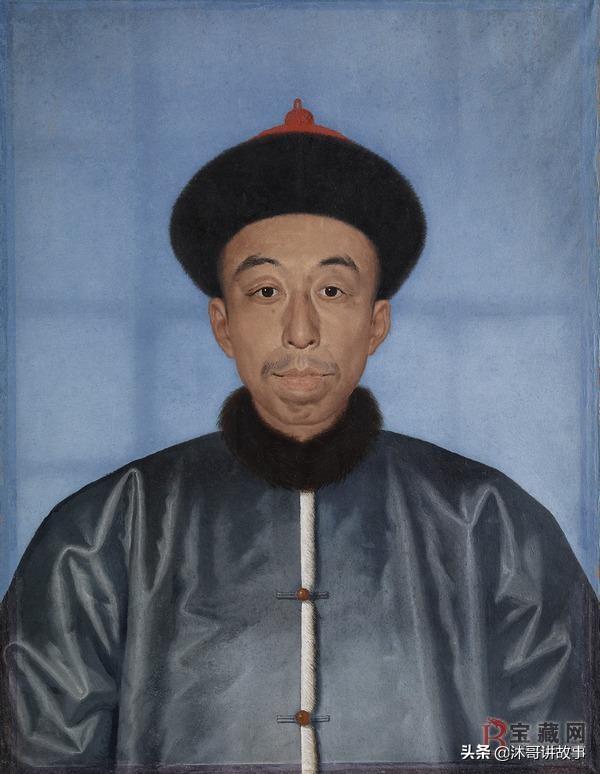我的儿子是雍正(我是雍正小老婆)
雍正是清王朝第五位皇帝,前四位分别是太祖努尔哈赤,太宗皇太极,世祖顺治、圣祖康熙。雍正是康熙的第四个儿子,在所谓“九龙夺嫡”的争斗中,意外成为皇位继承人。

雍正出生于1678年,病逝于1735年,他一生总共生了十个儿子,其中最有名的,就是后来被称为乾隆皇帝的皇四子弘历。
这十个儿子分别是:1、爱新觉罗·弘晖,追封端亲王,生母孝敬宪皇后乌拉那拉氏。2、爱新觉罗·弘昐,生母齐妃李氏。3、爱新觉罗·弘昀,生母齐妃李氏。4、爱新觉罗·弘时,生母齐妃李氏。5、爱新觉罗·弘历,即清高宗乾隆帝,初封宝亲王,生母孝圣宪皇后钮祜禄氏。6、爱新觉罗·弘昼,和恭亲王,生母纯懿皇贵妃耿氏。7、爱新觉罗·福宜,生母敦肃皇贵妃年氏。8、爱新觉罗·福惠,追封怀亲王,生母敦肃皇贵妃年氏。9、爱新觉罗·福沛,生母敦肃皇贵妃年氏。10、爱新觉罗·弘曕,果恭郡王,生母谦妃刘氏。
这当中,有六个幼年即夭折,分别是爱新觉罗·弘晖,生于康熙三十六年(1697年)三月二十六日子时生,生母 孝敬宪皇后,是名副其实的皇嫡长子,不过于康熙四十三年(1704年)早殇,年仅八岁。
次子爱新觉罗·弘昐,母亲是齐妃李氏(知府李文烨的女儿),于康熙三十六年六月初二生,康熙三十八年二月二十九日殇,年2岁。
三子爱新觉罗·弘昀,康熙三十九年八月初七日生,康熙四十九年十月二十五日殇,年10岁,母亲同样是齐妃李氏。
还有三个都是年妃所生,分别是福宜、福惠、福沛,除了福惠活了8岁,另外两个都只有一岁不到。

年妃即年羹尧的妹妹,她是雍正皇帝最宠爱的妃子,福惠被称为八阿哥,是雍正最为钟爱的皇子,一直都被带在身边培养。无论是朝鲜使臣还是西洋传教士,都察觉到了雍正皇帝对福惠的钟爱之情,朝鲜人甚至将其视为储君人选。
可惜天不假年,这个被视为理所当然未来皇帝人选的福惠和他体弱多病的母亲以及两个兄弟一样,仅仅活到8岁就夭折了。
雍正对福惠的去世也非常痛苦,记载“帝辍朝,大内素服各三日,不祭神,诏用亲王礼葬。” 雍正十三年(1735年) 乾隆追赠福惠为怀亲王。
长大成人的有四个,
第一个,是爱新觉罗·弘时,他是李妃所生三子当中,唯一长大成人的,出生于1704年3月18日出生,即康熙四十三年甲申二月十三日。
不过,雍正不喜其母齐妃李氏,在雍正四年二月十八日,以其年少放纵,行事不谨为理由(据说他曾经向年羹尧索贿1万两白银),将他过继给政敌允禩(即鼎鼎大名的八阿哥),很快,又在雍正五年(1727年)将这个儿子削除宗籍。
一年后,遭受重大打击的弘时抑郁而终,年二十四岁。
第二个,是爱新觉罗·弘昼生于1711年,死于1770年,母为纯懿皇贵妃耿氏。他在雍正十一年(1733年),晋封为和硕和亲王。雍正十三年(1735年)二月,设办理苗疆事务处,协同弘历、鄂尔泰等共同办理苗疆事务。

乾隆帝登基之后,弘昼历任正白旗满洲都统,迁镶黄旗满洲都统的职务,充玉碟馆总裁,升为议政大臣,管理正黄旗觉罗学事务。乾隆三十五年,即1770年,弘昼逝世,予谥为恭。
第三个,是爱新觉罗·弘曕,出生于1733年6月11日,因出生于圆明园,故乳名为“圆明园 阿哥”。乾隆三年,即1738年三月,庄亲王允禄奏请把弘曕过继给允礼,乾隆准奏,并命其承袭果亲王。
乾隆即帝位时他只有四岁,乾隆对于这个幼弟非常喜爱。刚满18岁,乾隆就让他管理武英殿、圆明园八旗护军营、御书处、药事房。又过了两年,又让他负责管理造办处事务。
这些都是典型的肥差,不过,弘曕恃宠自傲的种种作为,慢慢引起了乾隆的不满。
乾隆二十八年,皇帝和弘曕算总账,给予严厉的处罚:“1763年九月初四日贝勒弘曕交罚银一万两,九月初九日广储司奏为销毁亲王金宝一颗。”
弘曕由郡王降为贝勒,罢免了所有官职,被革职后,他闭门家居,抑郁不欢,一病不起,一年多后去世。
第四个,乾隆皇帝,清朝第六位皇帝,年号“ 乾隆 ”,寓意“天道昌隆”。在位六十年, 禅位后又继续训政,实际行使最高权力长达六十三年零四个月,是中国历史上实际执掌国家最高权力时间最长的皇帝,也是最长寿的皇帝。

据《清史稿》记载,雍正一共有10个儿子,未及成年就死的有6个。长大成人的只有4个:
1.弘时。雍正四年,因弘时“放纵不瑾”,被削除宗籍,令他做为允禩之子。允禩就是夺嫡之时与雍正斗得昏天暗地的八爷。此时,已被整的奄奄一息,雍正将弘时发配为八爷之子,那是要一起整死的节奏,一年之后就死了,年仅24岁。
2.弘历。即乾隆,1735年继位为帝,相传少年时代即得康熙喜爱,为其父雍正继位助攻颇多。继位后,以祖父康熙为榜样,处处学他,自命为“十全老人”,在位60年,为不超过康熙在位时间,自禅为太上皇,实际执政达63年,是历史上实际在位时间最长的皇帝,乾隆于1799年寿终正寝,享年89岁,也是历史上最长寿的皇帝。
3.弘昼。最荒唐又最明哲保身的皇子,行事荒唐,常自办丧事,自食祭品。但后世认为弘昼是看到了康熙“九龙夺嫡”之惨,自知无力竞争帝位,故意为之。弘昼活到乾隆35年,安稳去世,死时60岁。
4.弘瞻。雍正死时,弘瞻仅3岁,因此完全没有卷入继位风波。后来,因允礼无子(允礼就是甄嬛传中圈粉无数的果郡王),乾隆将其过继给允礼,并承袭果亲王封号。但后因侍宠自傲,乾隆罢免了他的一切官职,降为贝勒。而弘瞻也因受此惊吓,一病不起,年仅33岁就去世了。
弘时24岁就死了,父子俩不和,弘时处处跟自己父亲唱反调,背后说父亲坏话,过继给了阿奇那,弘历就是乾隆,弘昼最好,天天装神弄鬼,活到七十多